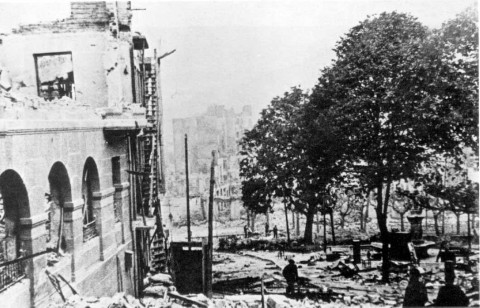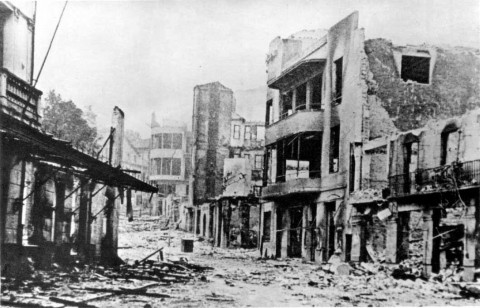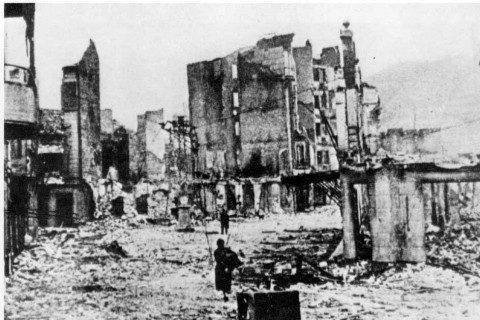Guernica -- IV
Here's a confession: I don't really get Guernica -- the painting, that is, not the event (which is why I haven't mentioned it inthisseries until now). I understand that it's a passionate reaction by a great artist to the tragedy unfolding in his own country. It's physically imposing, rich in symbolism and, by now, a part of history itself. I'd love to see it one day. But what I don't get is how, and why, Picasso's Guernica came to be seen as a more powerful reaction to the coming of total war than this:

Or this:
Or this:
Or this:
Or this:
Or this:
To me, it's not, but perhaps I'm irredeemably literal. Why is Guernica such a recognisable image, and these so unfamiliar? Is art more powerful than reality? (Not that photographs aren't constructed at all, but they do record the effects of photons which were actually reflected from the ruins of Guernica, or emitted from the flames which consumed it.) Are the photographs of Guernica '37 devalued by their similarity to post-raid pictures of London '40, Hamburg '43 and Tokyo '45? Feel free to educate me in the comments!
The images of Guernica after the air raid are from Wikipedia, though from a user page, not an article. A couple have been deleted from Wikipedia, but I managed to find them here and here.